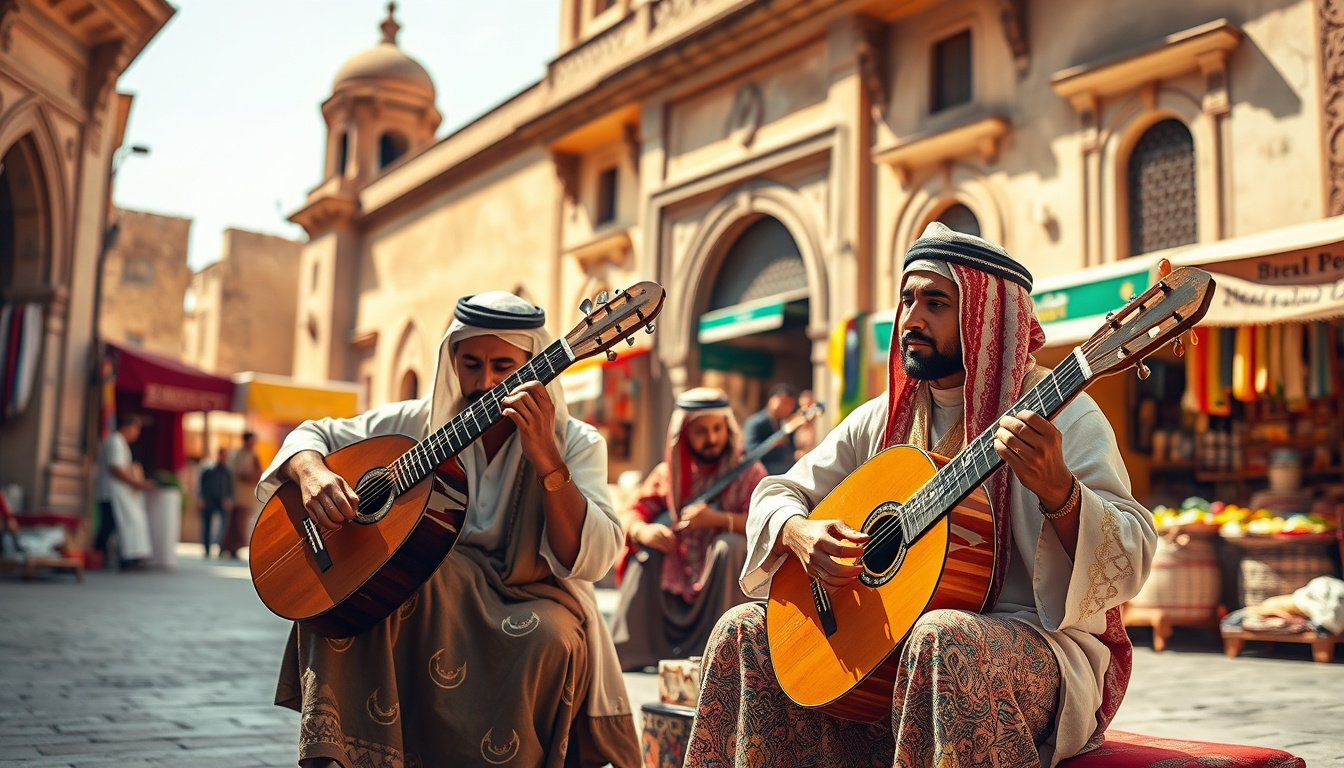Egypt, often referred to as the cradle of civilization, is not only renowned for its archaeological wonders and breathtaking landscapes but also for its vibrant and diverse music scene.
Egyptian music, deeply rooted in the country’s rich history, mirrors the evolution of its culture, traditions, and social practices.
From the enchanting melodies of ancient times to the modern rhythms that resonate globally, the journey through Egyptian music reveals the soul of a nation.
In this article, we will explore the evolution of Egyptian music, delve into the unique traditional instruments that shape its sound, discuss the role music plays in cultural and religious contexts, celebrate the contributions of famous Egyptian musicians, and examine the global impact of this captivating genre.


The Role of Music in Egyptian Cultural Practices and Religious Ceremonies
### The Role of Music in Egyptian Cultural Practices and Religious Ceremonies
Egyptian music holds a significant place in the fabric of the nation’s cultural and religious identity.
From the vibrant strains of traditional folk tunes echoing through the streets of Cairo to the haunting melodies performed in spiritual ceremonies, music in Egypt transcends mere entertainment; it is a vessel for communal expression and spiritual connection.
During religious ceremonies, music plays a pivotal role in enhancing the atmosphere of devotion and reflection.
For instance, Sufi rituals often incorporate traditional Egyptian music elements with repetitive chants, known as dhikr, that aim to foster a state of spiritual ecstasy.
These musical practices create a sacred ambiance that enables participants to connect with the divine.
In addition to religious observance, music is also integral to Egyptian celebrations and festivals.
Traditional instruments such as the oud (a stringed instrument) and riqq (a type of tambourine) are often central to performances that mark important cultural events, showcasing Egypt’s rich musical heritage.
Festivals like the annual Cairo Jazz Festival or the Mawawil Festival celebrate this diversity, bringing together artists from various backgrounds to share their interpretations of Egyptian music.
Moreover, music serves as a historical narrative, preserving stories, traditions, and social issues relevant to Egyptian life.
Genres like folk, shaabi, and classical offer insights into Egypt’s evolution over centuries, reflecting the influences of different cultures melded into a unique musical tapestry.
By understanding the pivotal role of music in both cultural practices and religious ceremonies, travelers and expats can gain deeper insights into the values, beliefs, and communal life that characterize Egypt today.
Famous Egyptian Musicians and Their Contributions to the Genre
## Famous Egyptian Musicians and Their Contributions to the Genre
Egyptian music holds a significant place in the cultural fabric of the Middle East and North Africa.
This rich musical tradition has seen the rise of many influential artists who have shaped its evolution over the decades.
One of the most renowned figures is Umm Kulthum, often hailed as the ‘Star of the East.’ Her majestic voice and emotional performances, particularly in the genre of rababa and tarab, captivated audiences and transformed the landscape of Arabic music.
Another giant in the world of Egyptian music is Mohamed Abdel Wahab, a pioneering composer and singer known for blending traditional melodies with modern orchestration.
His works not only enriched Egyptian music but also introduced a new style that resonated across the Arab world.
Numerous modern artists have followed in his footsteps, continuing to explore the nuances of Egyptian musical traditions.
Abdel Halim Hafez, often referred to as ‘The Nightingale of Egypt,’ played a pivotal role in popularizing Egyptian music throughout the 1950s and 1960s.
His romantic ballads and captivating performances captured the hearts of millions, making him a beloved icon.
The themes of love and longing prevalent in his songs remain a hallmark of Egyptian music to this day.
In more contemporary times, Amr Diab has emerged as a prominent figure, known for his innovative fusions of traditional Egyptian sound with global pop influences.
This genre-bending approach has not only made him immensely popular within Egypt but has also allowed him to gain a significant following across the world.
His unique style is often referred to as Mediterranean music, bridging the gap between various musical traditions and introducing Egyptian music to a broader audience.
These musicians are just a glimpse into the vibrant world of Egyptian music, characterized by its emotional depth and cultural significance.
From traditional folk songs to modern pop, the legacy of these artists continues to inspire new generations, ensuring that Egyptian music remains a vital part of both the local and international music scenes.
 July 2025
July 2025

